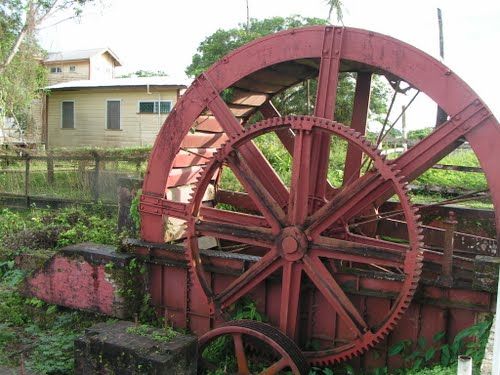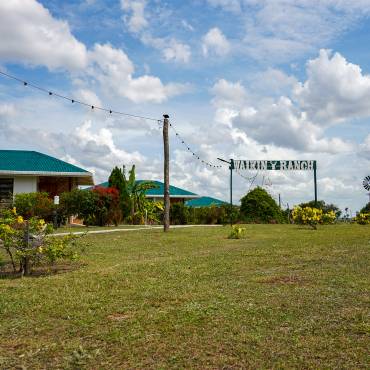A Relic in Time
By The National Trust of Guyana
The National Trust of Guyana is pleased to feature the Christianburg Waterwheel located in the town of Linden. The town is a repository of diverse heritage resources that are of national, historic, architectural, cultural and natural importance.
The waterwheel is tied to the industrial development of Linden, specifically the ward of Christianburg. The origins of the Christianburg Waterwheel, as it is known,can be traced to the 19th century after Scottish Engineer, John Dalgleish Patterson, designed and built the structure as part of a hydro-powered plant.
Patterson was contracted by the British after the invasion of 1803, which resulted in the Dutch losing control of Essequibo and Demerara to Britain. The Scottish Engineer was tasked with building living quarters for government employees in the Dutch established settlement, known then as Stabroek. During this period, Stabroek was known mainly for its balata and rubber bleeding. The area was subsequently renamed Christianburg in honour of Governor Christian Finette, who joined his first name with his wifeÕs family name ÔBurgÕ. After completing the living quarters, Mr. Patterson settled in the area
and began harvesting sugarcane and later established a sawmilling business.
The sawmilling business consisted of a hydro-powered plant with one of the main features being the waterwheel. The plant significantly boosted production and reduced the cost associated with logging in the area. The waterwheel,which was installed in the mid to late 1800s, was built by Mirrlees, Tait, & Watson, Glasgowand was fed by the Katabuli Creek which flowed from the savannah areas and was released into the Demerara River. The hydro-powered plant had an impressive lifespan, only ceasing operations in the 1950s. As time progressed, only the waterwheel remained as a mere ruin. In 2017, the waterwheel underwent a major rehabilitation process, by the National Trust which was aimed at not only preserving the cultural integrity of the site, but to encourage public access and enjoyment of the monument.
Apart from this historic structure, there are a number of other prominent heritage sites within close proximity and are of significant value to LindenÕs tangible heritage. En route to the waterwheel at the beginning of Burnham Drive is the HamiltonÕs Sawmill Steam Boiler, a monument whose origins can be traced to the 19th century. The Wismar Market which was built using aluminum materials in 1952 is another such site.
St. AidanÕs Anglican Church is located a short distance away from the waterwheel on Burnham Drive and is the oldest church in Linden.
The church was established in 1897, in a small settlement located in Malai and was moved to its current location in 1913. St. MatthewÕs Church is located obliquely opposite the Christianburg Waterwheel and was established in 1898.Itis the second oldest established church in Linden. Across the Demerara River from waterwheel is a riverine view of the Alumina Plant which was opened in 1961, and was considered at the time to be the most expensive construction project to be undertaken in British Guiana. These sites and many more represent the richcultural legacy of Linden.
Source of information:
1. National Trust of Guyana.Linden Heritage Trail. Georgetown : National Trust of Guyana, 2016. pp. 9,33,35-36, 38-39.
ISBN: 0978-976-95411-2-2.





Add Your Comment